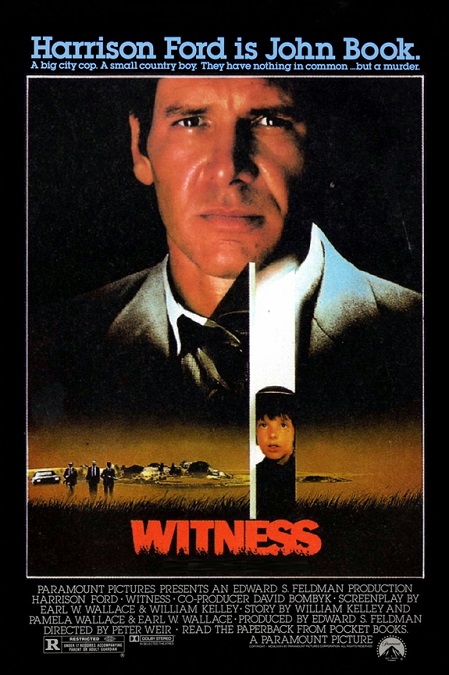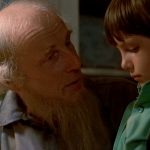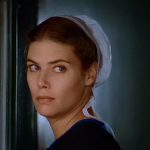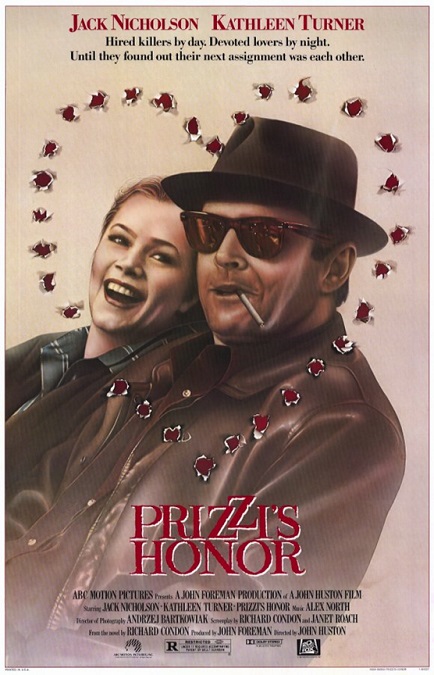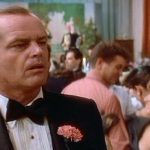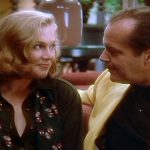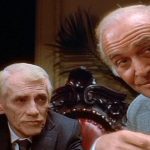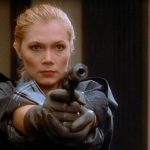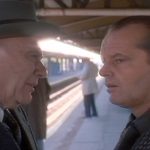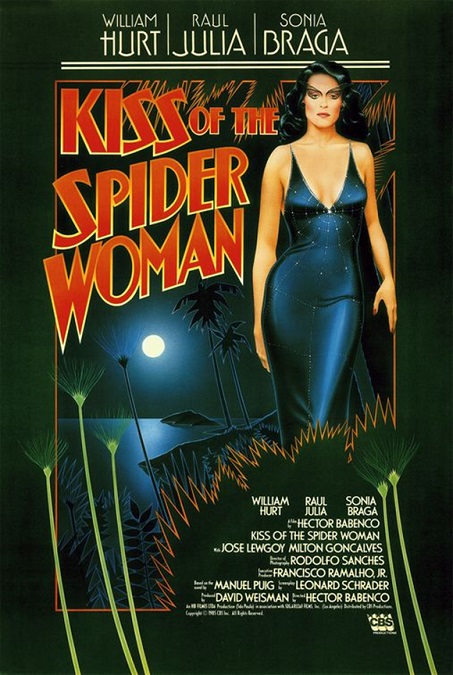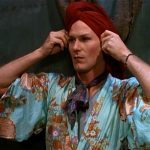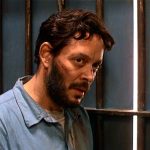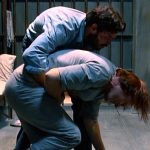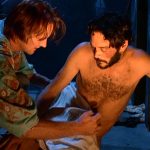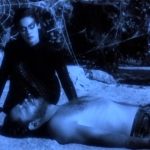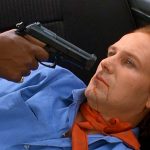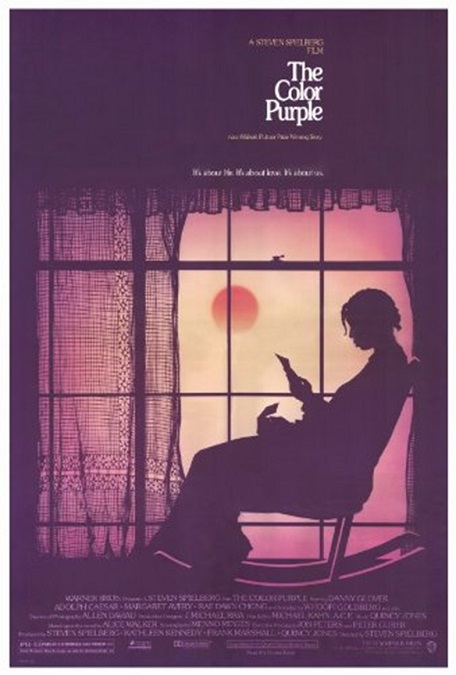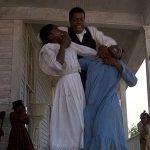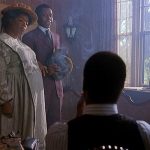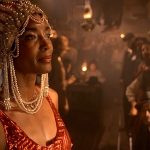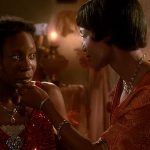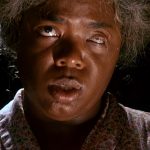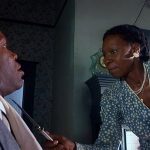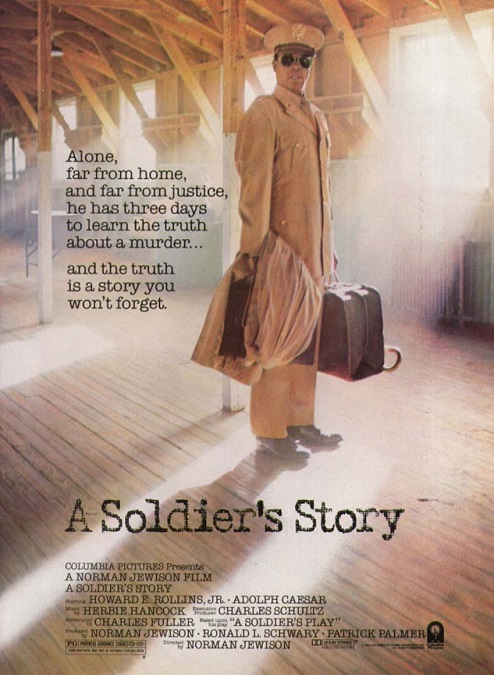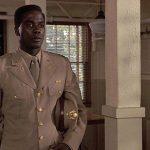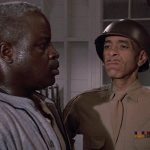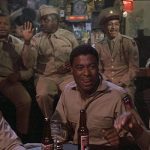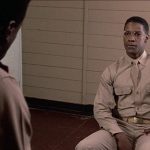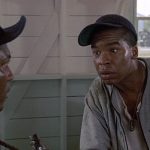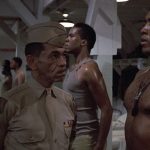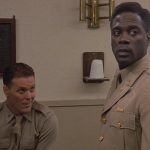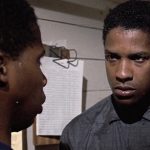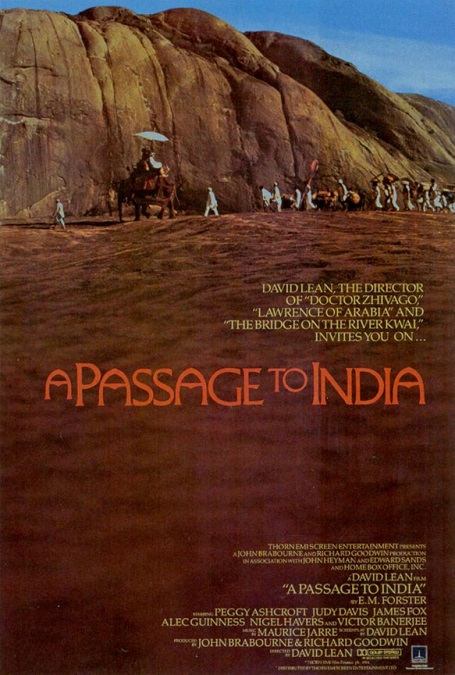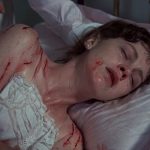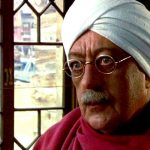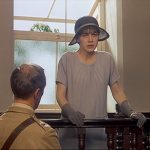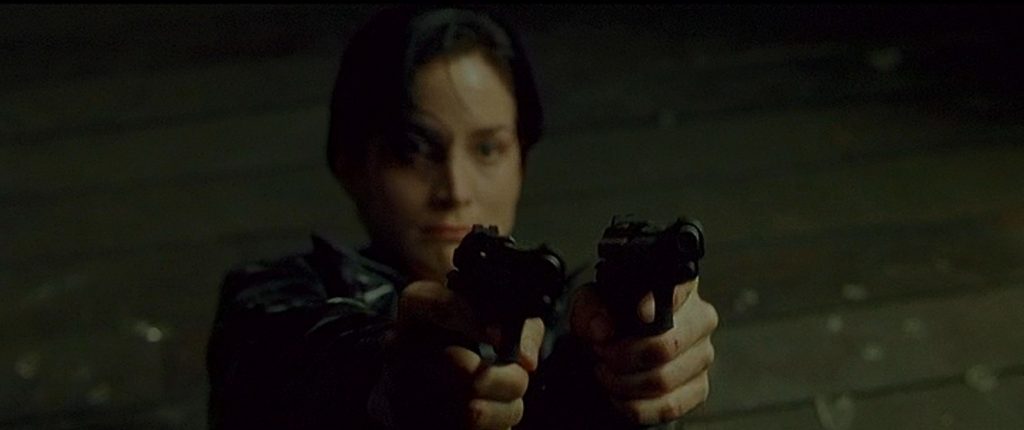
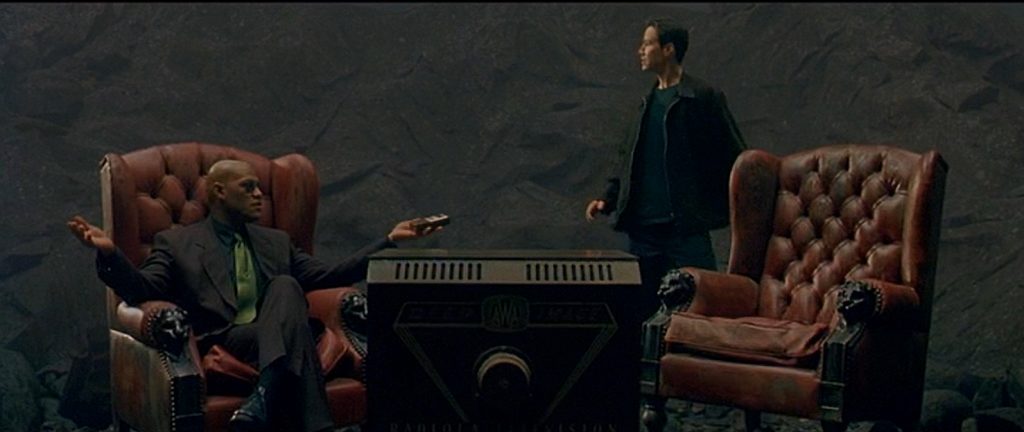
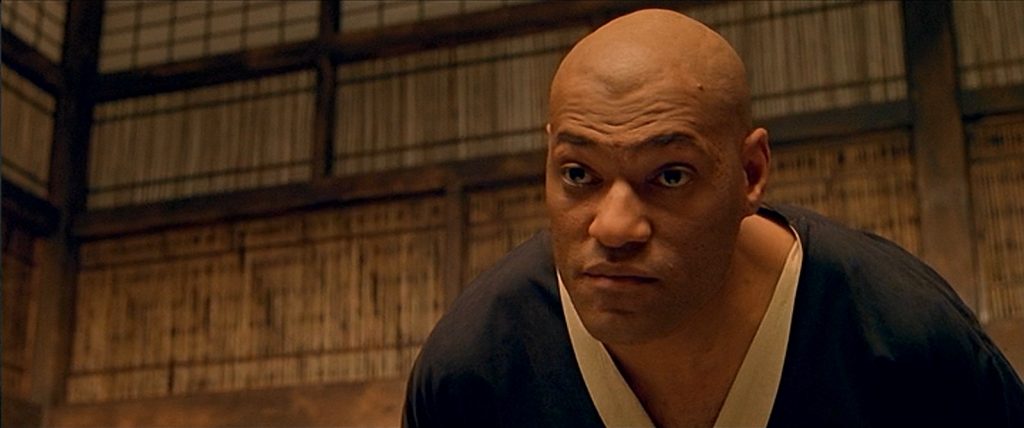
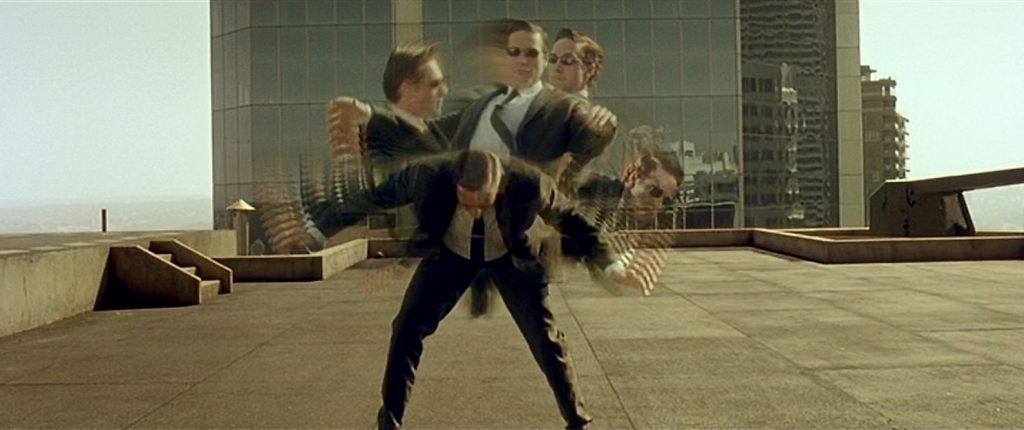
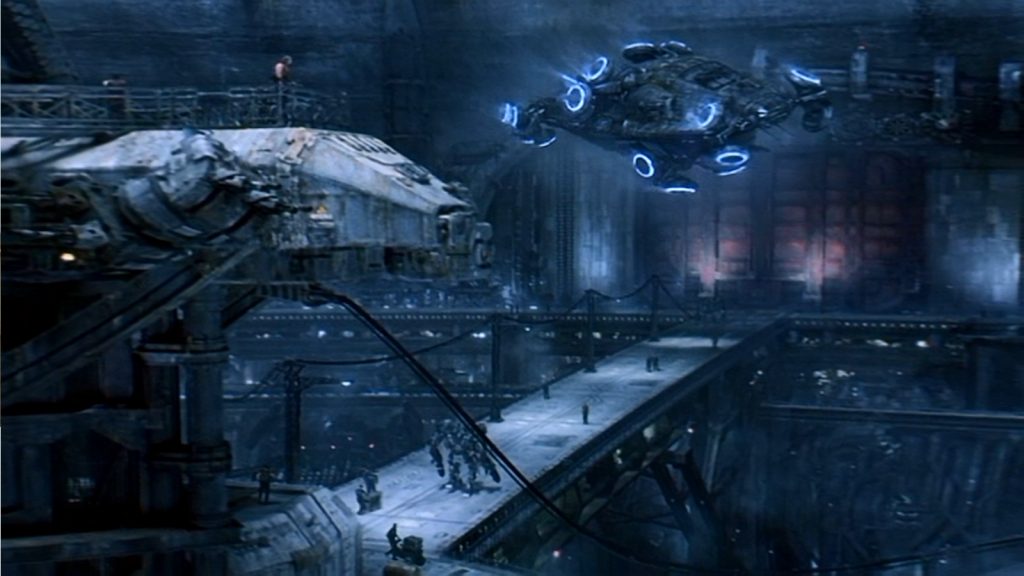
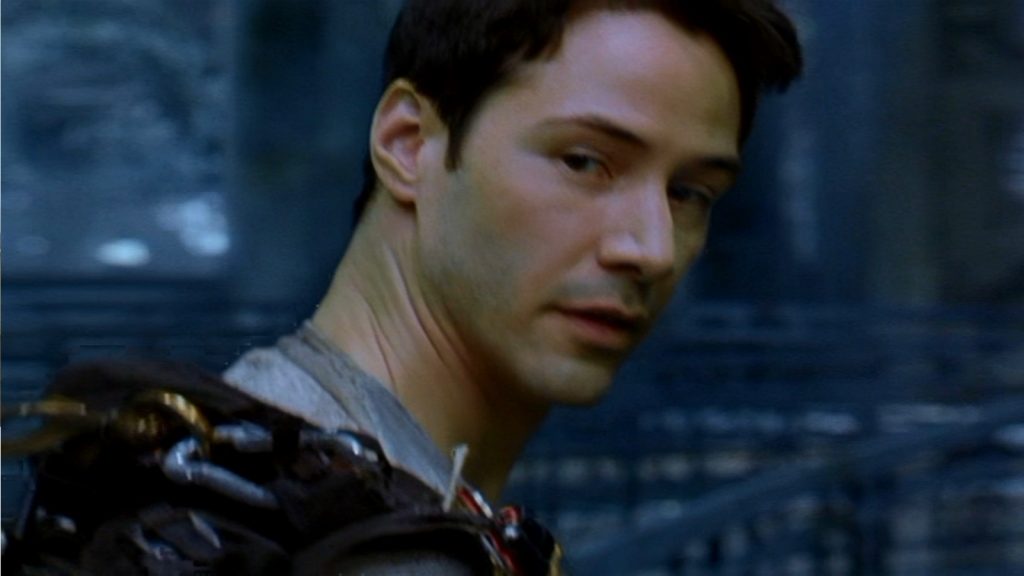
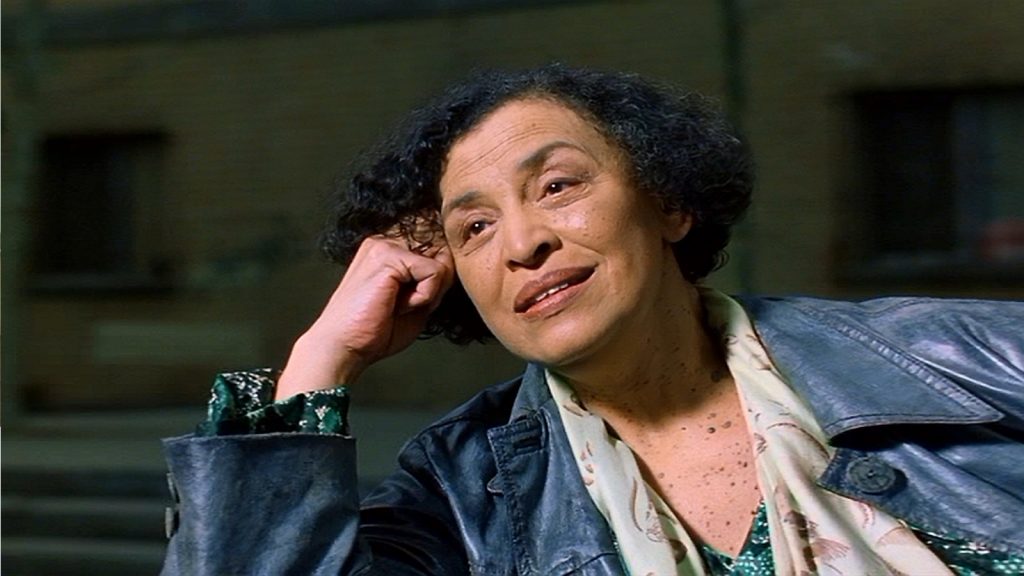
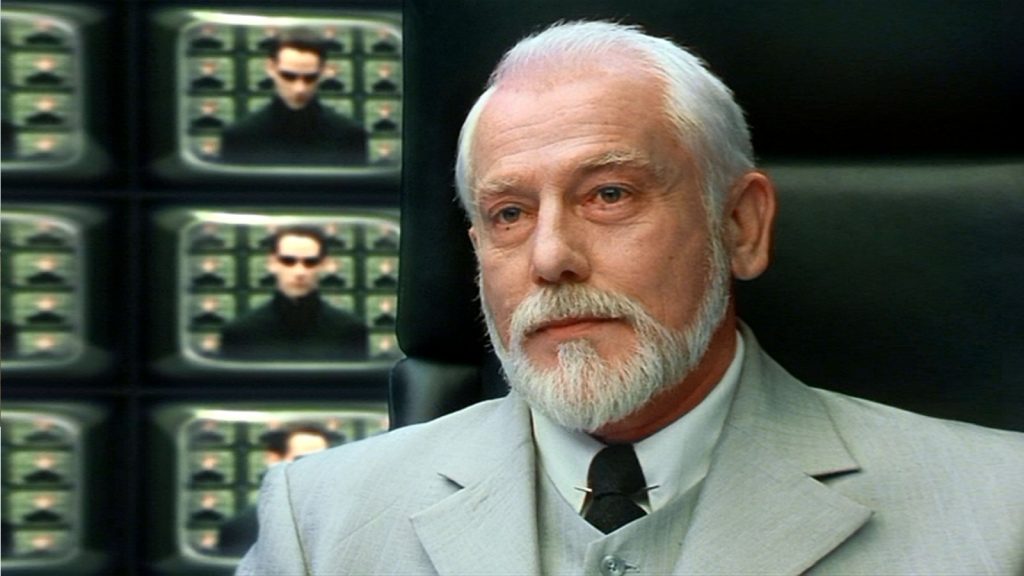
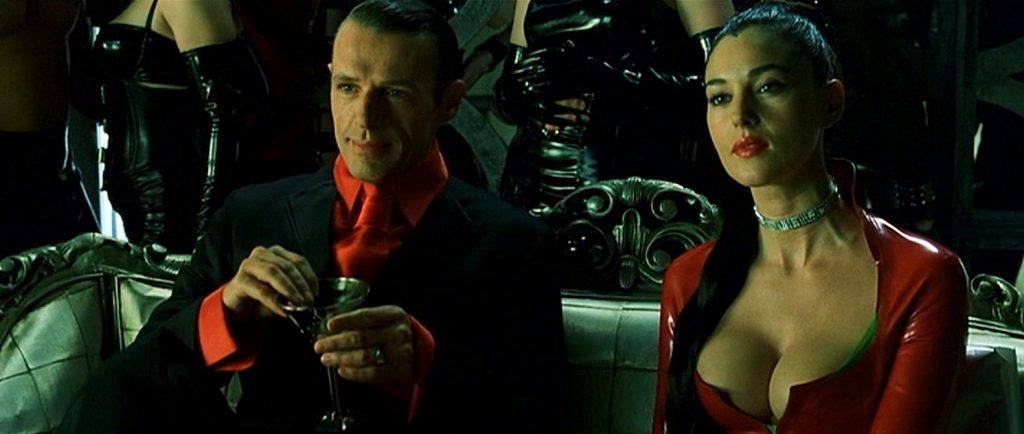
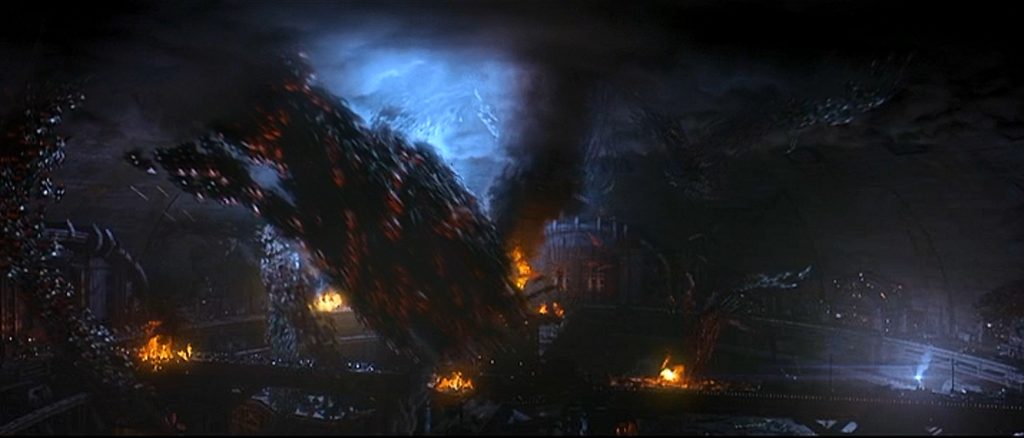
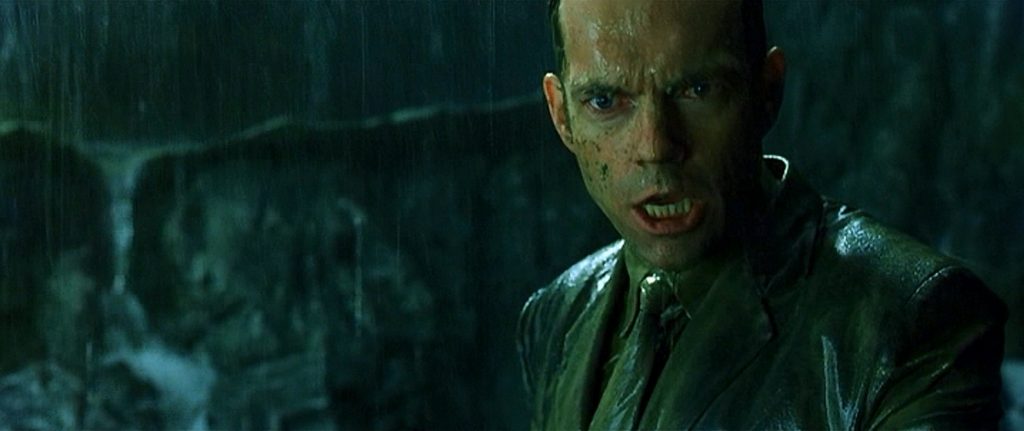

The Matrix – 1999
The Matrix Reloaded – 2003
The Matrix Revolutions – 2003
When it comes to modern science fiction, this franchise is one of the big ones. It is a film that fires the imagination, makes you think, touches on philosophy and religion, is inventive and groundbreaking, and above all it super fun to watch. It is a sci-fi, action-adventure, kung-fu fantasy. These movies have it all. And I have to talk about all three of the films as if they were one because the overall story arc is continuous and complete.
But the franchise, as a whole, is larger than even the three films. The larger story was continued in anime, comic books, and video games, all of which were canonical. It is widely recognized as one of the greatest sci-fi franchises of the 90s, if not of all time. True, I hear a lot of film snobs say that the first movie was incredible, and the two sequels pretty much sucked. But I beg to differ! A lot! The sequels were awesome! Let me explain why, which I can do without even going into the plot.
The first film was new and interesting. It was smart and engaging. It was using filming techniques and special effects that had never been seen before. It set up an awesome cast of characters that were heroic and beyond bad-assed! But the movie’s main shtick was steampunk and action, mostly in the form of kung-fu fighting. In the sequels they stuck with that shtick. They just upped the stakes, and increased the fantasy elements. But it was still, primarily, a kung-fu fighting movie at its heart.
Take it for what it was and enjoy it, I say. People might claim that they had seen it all before, and on some level that might be true. But I’d wager to say that they have never seen it done in such an exciting and unique way. The special effects were stunning… well, most of them were, but I’ll address that in a bit. The dramatically stylized visuals were fantastic. The story, which drew from many different narrative tropes, has been told many times in many different movies and books. But nobody had ever told it exactly like The Matrix.
Keanu Reeves, plays a cyber-hacker, codenamed Neo. He is searching for meaning in a life he finds meaningless. He is approached by Trinity, played by Carrie Anne Moss. She says that she knows what he is looking for, and the answers to his questions can be found in a mysterious man known as Morpheus, played by Lawrence Fishburn. But before he can meet Morpheus, Neo is captured by men who look like CIA operatives in black suits and sunglasses, led by a sinister man called Agent Smith.
There’s the set-up. The story is too long and complex for me to give a concise synopsis. If you want the story, read the basic plot on Wikipedia or better yet, watch the movies, if you have not already seen them. What I plan to do in this review is mention some the things I liked and a few of the things I didn’t like.
For example, I loved the cyberpunk look of the whole thing. The costumes, the hairstyles, the virtual environments. The entire thing was eye candy from one end to the other. And the special slow motion effects with people doing super-human acrobatic moves, defying the laws of physics, were so amazing. When I think of the Matrix franchise, it is those “inside the Matrix” aesthetics that first come to mind.
The second is the look of the grubby post-apocalyptic “real” world. The incredible CGI environments, the dirty, torn clothing, the rough, rusty insides of the hover-ships. It was, in its own way, just as cool as the other reality. However, I have to ask – did everyone have to wear sweaters with that same kind of vertical unraveling, or was that just the popular style? I mean, I get it. These people are run down and everything is supposed to look damaged. But it looked like a costume designer found a single technique to make the sweaters look damaged and said. “Yes! Just do that to all of them. What? Yes, ALL of them!”
I hear a lot of people criticize the plot of the second film, and even more people criticize the plot of the third film. In the first film, they spent most of their time establishing the conditions and back-story of the universe, and the characters. The second movie develops those things and turns the action up a notch, giving Neo a chance to learn what he can do with the super powers he discovered at the end of the first film. The third film increases the action yet again and gives us an epic conclusion with Neo evolving into the messianic figure he was supposed to be since the very beginning. The overall story arc follows a logical progression to a climactic conclusion.
So I went on to the internet and tried to look up why people don’t like the sequels. Some say that they didn’t have as much grip or intensity as the first movie. Some say that they weren’t as philosophically deep or that they seemed to be dumbed down. Some say they were too philosophical and required too much thinking. Others say that they focused too much on the war to save Zion from the machines instead of on focusing freeing more people from the Matrix. What it really comes down to is that after the spectacular first film, everybody had their own expectations about what the sequels should be. They all got their hopes up and very few people got exactly what they wanted or were expecting.
One of my favorite things about the movies are their action scenes. The action sequences in the first film were exciting and introduced us to the new and innovative special effects. The opening scene with Trinity running from Agents over the rooftops was just a thrilling way to start the whole thing off. The kung-fu sequences, first between Noe and Morpheus were fun and were actually integral to the plot. Then the part when Neo finally fought the agents and learned how to beat them was super exciting, because while his mind was in the Matrix, his body was in danger of being killed by sentinels.
The second movie had the great chase on the freeway and the fight with the Merovingian’s men in the great hall. There was also the fight between Neo and the hundred Agent Smiths. But though the scene was pretty cool, I have to say that this is the first time I noticed the franchise’s biggest failing. It was a big budget movie that had the services of some of the industry’s best CGI programmers. But there were times when the live footage of Keanu and Hugo were mixed with CGI images of them that were horribly obvious. Sometimes they looked plastic, rubbery, one dimensional, and just terribly done. This is mostly evident in the 2nd and 3rd movies. For such a big budget film, I expect better.
Then the third movie had the awesome battle for the docks at Zion and the final climactic battle between Neo and Agent Smith. Sure, these sequences were mostly CGI, but that made them no less exciting to watch, especially the battle for the docks. It was chaotic and fast paced, and with the added suspense of the Hammer’s high speed approach, it was just awesome filmmaking!
Now there are two characters that I’d like to mention. The Oracle and the Architect. The Oracle was a great and memorable character, played in the first two films by Gloria Foster, and in the 3rd film by Mary Alice. And I liked that the change in the character’s appearance is addressed as part of the plot. She is always calm and eerily insightful. The Architect, played by Helmut Bakaitis, was also perfectly cast and wonderfully portrayed as a cold and insanely logical machine.
The character of the Merovingian, played by Lambert Wilson, may have been too long winded and full of himself, but that brings me to the point that I found it a wonderfully interesting concept that he, his beautiful wife Persephone, the Oracle, the Architect, and even Agent Smith were all programs, each having a unique personality, like real people. But this was a sci-fi/fantasy film. So why not? It was just a fun joy-ride from beginning to end. It made me think, it made me excited, it drew me in to its epic nature and its wonderfully imagined world. I loved all three of the movies in the franchise and found that I can forgive the small lapses into bad CGI.
And I would be remiss if I did not mention several actors who gave life to some very memorable characters. Joe Pantoliano as the treasonous Cypher, Jada Pinket Smith as Niobe, Captain of the Logos, Harold Perrineau as Link, Morpheus’ pilot of the Nebuchadnezzar, Randall Duk Kim as the Keymaker, Harry Lennix as Commander Lock, Neil and Adrian Rayment as the evil twins, and Collin Chow as the Oracles servant Seraph, all did a great job and helped to make The Matrix one of the greatest science fiction franchises of all time.
